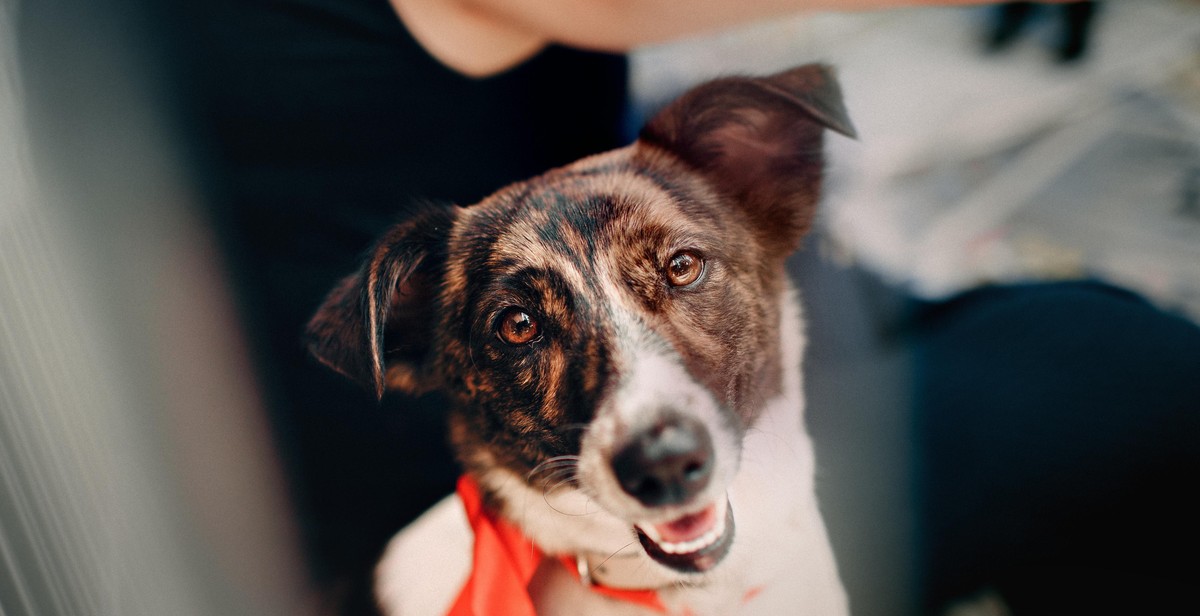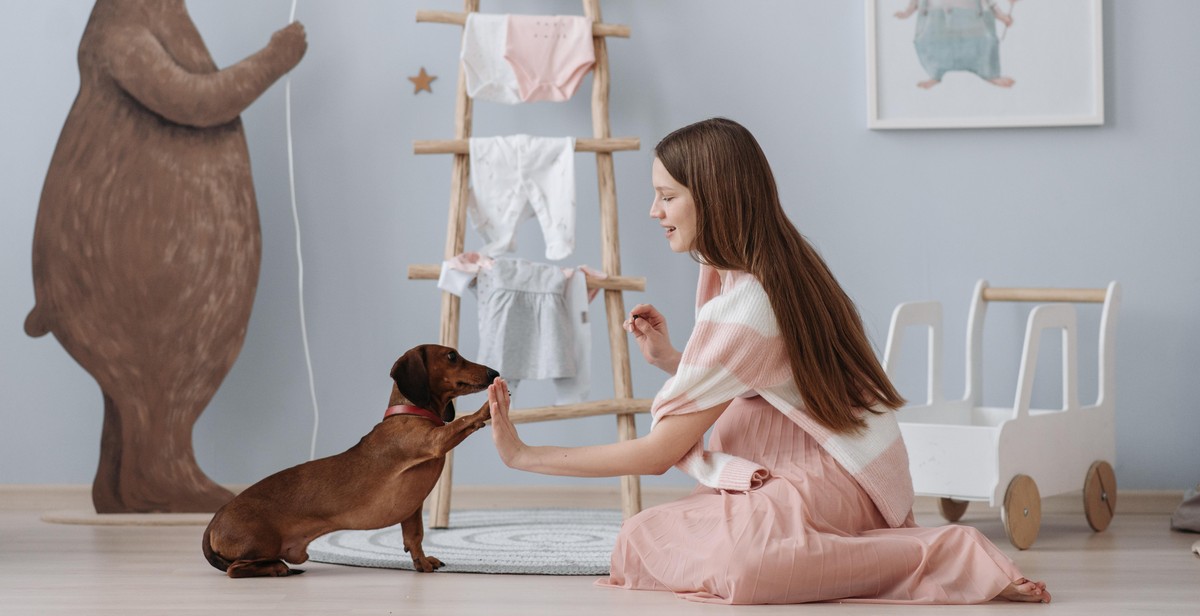How to Train a Rescue Dog: Techniques and Tips for Adoption Success
Adopting a rescue dog can be a rewarding experience, but it also comes with its own set of challenges. Many rescue dogs have experienced trauma and neglect, which can lead to behavioral issues and difficulty adjusting to a new home. Training is key to helping your rescue dog succeed in their new environment.
The Importance of Training a Rescue Dog
Training your rescue dog is not only important for their well-being, but also for your own. A well-trained dog is less likely to exhibit destructive behavior, and is more likely to be accepted by your family and community. Additionally, training helps to establish a bond between you and your new pet, building trust and increasing their sense of security.
Techniques for Training a Rescue Dog
When training a rescue dog, it is important to be patient and consistent. Positive reinforcement techniques are often the most effective, as they encourage good behavior without causing fear or anxiety. Using treats, praise, and toys to reward good behavior can be very effective.
- Start with basic obedience training, such as sit, stay, and come.
- Use a consistent tone of voice and body language to communicate with your dog.
- Establish a routine and stick to it, as this helps to create a sense of security for your dog.
- Be aware of your dog’s body language and adjust your training techniques accordingly.
Tips for Training a Rescue Dog
Training a rescue dog can be challenging, but there are some tips that can help make the process smoother:
- Be patient and persistent. It may take time for your dog to adjust to their new surroundings and to learn new behaviors.
- Be consistent with your training techniques and routines.
- Provide plenty of exercise and mental stimulation for your dog, as this can help to reduce stress and anxiety.
- Consider enrolling your dog in a training class or working with a professional trainer.
By following these techniques and tips, you can help your rescue dog adjust to their new home and become a happy and well-behaved member of your family.
Understanding Rescue Dogs
Adopting a rescue dog can be a rewarding experience for both you and the dog. Rescue dogs are typically dogs that have been surrendered, abandoned or rescued from a shelter. These dogs often come from difficult backgrounds and may have had little or no training, socialization or human interaction. As a result, rescue dogs may exhibit behavior issues that can be challenging for new owners to address.
Why Adopt a Rescue Dog?
There are several reasons why adopting a rescue dog can be a great choice:
- You are giving a dog a second chance at life.
- You can save money compared to buying a dog from a breeder.
- You may find a dog that is already house-trained or has basic obedience training.
- You can find a dog that matches your lifestyle and personality.
Challenges of Adopting a Rescue Dog
While adopting a rescue dog can be a wonderful experience, it is important to understand that there may be challenges. Some rescue dogs may have behavior issues that need to be addressed. These issues may include separation anxiety, fearfulness, aggression, or destructive behavior. It is important to be prepared to work with your new dog and to seek the help of a professional trainer or behaviorist if needed.
Additionally, it may take time for your rescue dog to adjust to their new home and family. They may be nervous or scared at first, and it is important to give them time and patience to settle in. Consistency, positive reinforcement, and love can go a long way in helping your rescue dog become a happy and well-adjusted member of your family.
| Pros | Cons |
|---|---|
| Giving a dog a second chance at life | May have behavior issues that need to be addressed |
| Saving money compared to buying a dog from a breeder | May take time to adjust to their new home and family |
| Finding a dog that is already house-trained or has basic obedience training | May require the help of a professional trainer or behaviorist |
| Finding a dog that matches your lifestyle and personality |

Preparing for Your Rescue Dog
Adopting a rescue dog can be an exciting and fulfilling experience. However, it is important to prepare your home and family before bringing your new furry friend home. Here are some tips to help you get started:
Creating a Safe Space
Before bringing your rescue dog home, it is important to create a safe space for them to feel comfortable and secure. This can be a crate or a designated area in your home where they can retreat to when feeling overwhelmed or anxious. Make sure the area is quiet and free from any potential hazards such as sharp objects or toxic plants.
Getting the Right Supplies
Having the right supplies on hand can make the transition for your rescue dog much smoother. Some essential items include food and water bowls, a leash and collar, a comfortable bed, and toys to keep them entertained. It is also important to have cleaning supplies on hand in case of accidents.
Preparing Family Members and Other Pets
It is important to prepare family members and other pets for the arrival of your new rescue dog. Make sure everyone understands the rules and boundaries for interacting with the dog. If you have other pets, introduce them slowly and supervise their interactions until they are comfortable with each other.
By taking the time to create a safe space, gather the necessary supplies, and prepare your family and other pets, you can ensure a smooth transition for your rescue dog into their new home.

Training Techniques
Training a rescue dog can be challenging, but with the right techniques, it can be a rewarding experience for both you and your furry friend. Here are some effective training techniques to help you and your rescue dog achieve success:
Positive Reinforcement Training
Positive reinforcement training involves rewarding your dog for good behavior. This can be done through treats, toys, or praise. By rewarding your dog for doing the right thing, you are reinforcing that behavior and encouraging your dog to repeat it in the future.
Clicker Training
Clicker training is a form of positive reinforcement training that uses a clicker to mark good behavior. The sound of the clicker tells your dog that they have done something right and that a reward is coming. Clicker training is a great way to teach your dog new commands and tricks.
Crate Training
Crate training is a useful technique for house training your rescue dog. By providing your dog with a comfortable and safe space, you can help them learn to hold their bladder and avoid accidents in the house. It’s important to introduce your dog to the crate slowly and make it a positive experience.
Leash Training
Leash training is essential for any dog, but especially for rescue dogs who may have had limited experience with leashes. It’s important to start slowly and use positive reinforcement to encourage your dog to walk on a leash. Remember to always use a sturdy leash and collar or harness.
House Training
House training a rescue dog can be challenging, but with patience and consistency, it can be done. It’s important to establish a routine and take your dog outside frequently. Rewarding your dog for going potty outside and avoiding punishment for accidents in the house will help them learn faster.
| Training Technique | Description |
|---|---|
| Positive Reinforcement Training | Rewarding good behavior to encourage repetition |
| Clicker Training | Using a clicker to mark good behavior and teach new commands |
| Crate Training | Using a crate to provide a safe and comfortable space for your dog |
| Leash Training | Teaching your dog to walk on a leash using positive reinforcement |
| House Training | Establishing a routine and rewarding good behavior |

Building Trust and Bonding
Training a rescue dog can be a challenging task, but it’s also a rewarding experience that can help establish a strong bond between you and your furry friend. Building trust and bonding with your rescue dog is crucial to ensure a successful adoption. Here are some techniques and tips that can help you establish a strong bond with your rescue dog:
Establishing a Routine
Establishing a routine is essential when it comes to training your rescue dog. Dogs thrive on a routine, and it helps them feel secure and comfortable. Set a routine for feeding, potty breaks, exercise, and training sessions. Consistency is key to building trust with your rescue dog, and it helps them understand what is expected of them.
Spending Quality Time Together
Spending quality time with your rescue dog is crucial to building a strong bond. Engage in interactive activities such as playing fetch, going for walks, and cuddling. It’s essential to create positive experiences for your rescue dog to build trust and a sense of security. Avoid leaving your dog alone for extended periods, as this can lead to anxiety and fear.
Socializing with Other Dogs and People
Socializing your rescue dog with other dogs and people is an important aspect of building trust and bonding. It helps your dog feel comfortable in new environments and situations. Start with short and controlled interactions, and gradually increase the duration and intensity of the socialization. This can help prevent behavior issues and promote a positive relationship between your rescue dog and other dogs and people.
By establishing a routine, spending quality time together, and socializing with other dogs and people, you can build trust and bonding with your rescue dog. Remember to be patient and consistent, and always reward positive behavior.
Dealing with Behavioral Issues
Rescue dogs may come with certain behavioral issues that need to be addressed for successful adoption and training. Here are some common behavioral issues and techniques to deal with them:
Separation Anxiety
Many rescue dogs suffer from separation anxiety, which can lead to destructive behavior when left alone. To address this issue, start by gradually increasing the amount of time the dog is left alone. Provide plenty of toys and treats to keep the dog occupied and make sure to give them plenty of exercise before leaving. Consider crate training as a way to provide a safe and secure space for the dog when alone.
Aggression
Aggression can be a serious issue in rescue dogs and should be addressed with caution. Consult with a professional dog trainer or behaviorist to assess the situation and develop a plan to address the aggression. Avoid punishing or yelling at the dog, as this can worsen the behavior.
Fear and Phobias
Rescue dogs may have fears or phobias due to past experiences. To address this issue, it’s important to expose the dog to new experiences in a controlled and positive way. Use treats and positive reinforcement to encourage the dog to approach new things and situations. Gradually increase exposure to the feared object or situation over time.
Excessive Barking
Excessive barking can be a nuisance for both the dog and their owners. To address this issue, start by identifying the cause of the barking. Is the dog bored, anxious, or trying to alert their owner to something? Once the cause is identified, work on addressing it with exercise, training, or providing a safe and secure space for the dog.
| Behavioral Issue | Techniques |
|---|---|
| Separation Anxiety | Gradually increase alone time, provide toys and treats, consider crate training |
| Aggression | Consult with a professional, avoid punishment or yelling |
| Fear and Phobias | Expose to new experiences in a controlled and positive way, use treats and positive reinforcement |
| Excessive Barking | Identify the cause, address with exercise, training, or a safe and secure space |
Conclusion
Training a rescue dog can be a challenging but rewarding experience. By understanding the dog’s background and behavior, and using positive reinforcement techniques, you can help your new furry friend adjust to their new home and become a well-behaved and happy member of your family.
Key Takeaways
- Rescue dogs may come with past traumas or behavioral issues, so it’s important to be patient and understanding.
- Positive reinforcement techniques such as clicker training and treats can be effective in training your rescue dog.
- Consistency and repetition are key in training your rescue dog, and it’s important to set clear boundaries and rules from the start.
- Exercise and mental stimulation are important for your rescue dog’s well-being and can help prevent destructive behavior.
- Seeking professional help from a dog trainer or behaviorist can be beneficial in addressing any specific issues or challenges with your rescue dog.
Final Thoughts
Adopting a rescue dog can be a life-changing experience for both you and your new furry friend. By taking the time to understand their needs and behavior, and using positive reinforcement techniques, you can help your rescue dog become a happy and well-adjusted member of your family. Remember to be patient, consistent, and loving in your training, and enjoy the journey of building a strong bond with your rescue dog.
